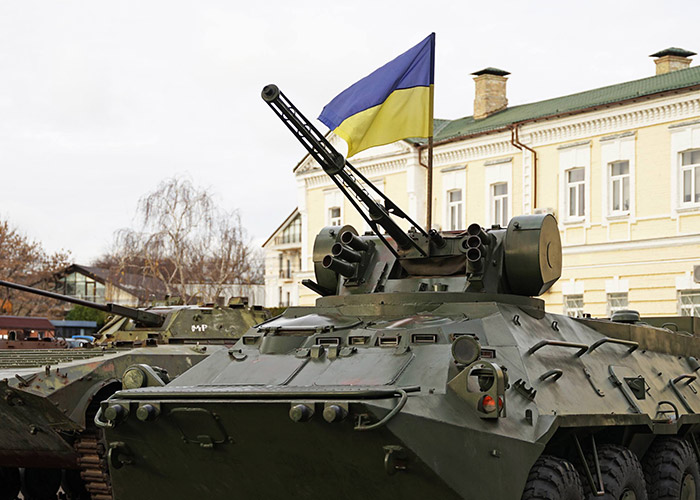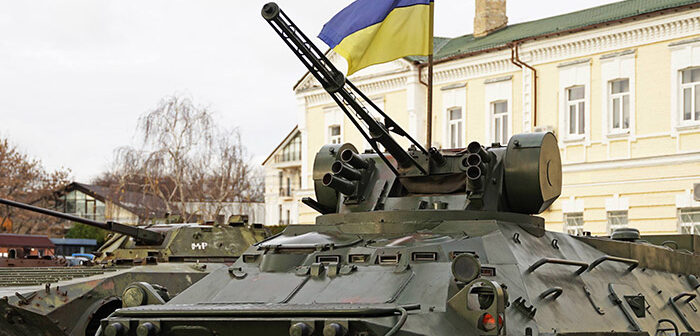
By Vasyl Myroshnychenko. Ambassador of Ukraine to Australia
As the third year since Russia’s unprovoked full-scale invasion of Ukraine is marked, the media is filled with coverage of US President Donald Trump’s intervention.
In reading these stories, Australians should understand that President Trump and Ukraine are aligned in their goal: we want peace.
We welcome the president putting peace firmly on the agenda with the Kremlin. In fact, on the day last week when President Trump was making his views known, Moscow was bombing Kyiv with over 50 missiles and drones. No one wants the killing of innocents to end more than we do.
Beyond the headlines, the reality is that, for a peace deal for Ukraine to be successful and sustainable, the sovereignty and the safety of Ukrainians must be secured. In turn, any negotiation process about the war on Ukraine – which was in fact unilaterally initiated in 2014 by Vladimir Putin’s invasion of Crimea and parts of eastern Ukraine – should have several important features.
First, it is only practical and realistic that Ukraine, its European neighbours and other partners, such as Australia, be fully part of negotiation processes toward a fair, comprehensive and enduring agreement. European leaders have now made very clear their view that a workable agreement needs to include them. Indeed, the outcomes of such negotiations can have far-reaching implications for Europe and the Indo-Pacific region; therefore, affected countries should be involved.
One of the reasons that negotiation needs to be multilateral is to make sure it is effective and binding. Unfortunately, Moscow has poor form in bilateral regards. For example, there have been some 200 rounds of negotiations with Russia post-2014; none given by the Kremlin have ever been fulfilled. This record of failure has to change and international cooperation is what can change it. Therefore, President Zelenskyy announced the peace plan in 2022, which eventually brought together 92 nations and 8 international organisations to a Peace Summit in Switzerland in June of 2024.
We need to learn from the past. Poor and weak agreements such as the 1994 Budapest Memorandum, implemented by Ukraine but not by other signatories, have contributed to the origins of the current war-torn situation.
Secondly, a peace process must see withdrawal of Russian forces from invaded and occupied Ukrainian territory. For us, this is not about land and borders per se – Ukraine has been and is fighting for our people and their survival.
We know what’s tragically happening to Ukrainian citizens, who are trapped in the occupied territories. They are subjected by Moscow’s occupying military force to draconian dictatorship and deprivation of their human rights. This includes the war crime that Vladimir Putin has been charged with by the International Criminal Court: the systematic kidnapping of up to 20,000 Ukrainian children. In another example, HIV rates from needle use in occupied Donetsk have sky-rocketed as Moscow’s mafia mates use it as a lawless hub for international drug trafficking.
Thirdly, a peace process needs to be long-term in its commitments and provide for prevention of another war. That means Ukraine needs security guarantees to protect it from future invasions and incursions. Ukraine has accepted its role of doing the heavy lifting for democratic nations; in future, democracy needs to be defended together.
Had Ukraine been a NATO member in 2014 or 2022, there would be no war to disrupt international security and economic prosperity. In the present, the recent decision of the NATO Washington summit sets the future course for Ukraine’s ultimate membership.
In the meantime, Ukraine continues the fight. It is now the world’s largest manufacturer of drones. It has taken out Russia’s Black Sea Fleet and 20 percent of its energy production. It has held Kursk in Russia for six months now. Nothing is forcing us to the table.
Fourth, as Russia has intentionally targeted and destroyed thousands of Ukraine’s educational, cultural and health facilities, any future framework must cover Ukraine’s reconstruction. An available source of funds is the USD300 billion in Russian sovereign assets held in western accounts, including some by Australian institutions.
What is Australia’s role in this context? That is for its leaders, of course, to decide, but I make this representation on behalf of my President Volodymyr Zelenskyy.
Australia’s foreign policy for many decades and across many governments has been founded on the highest regard for the international rules-based order, including the recognition of the sovereignty of nations. It has been a champion of the UN Charter which enshrines these principles. To further stand with Ukraine at the current critical juncture is a continuation of that successful multilateral policy and we welcome assurances given in that respect.
I know from my many positive interactions with your political leaders that Australia sees that, when might is right, security risks increase across the globe and in the Indo-Pacific region. If Russia is recognised or rewarded for a neo-colonial land grab and the brutal subjugation of a nation, a green light is also given to others who might seek to assert their hegemony on a region or a neighbour.
It is why Ukraine is very thankful for Australia’s aid, given by both Labor and Coalition Governments, of some AUD1.5 billion to date. I have personally seen Australian Bushmasters making a positive and impressive difference in Ukraine’s defence.
I have also heard everyday Ukrainians ask me to pass on their gratitude to Aussies, a people they deeply admire for their values and for the comparative peace of their society. Your stability, dignity, opportunity and normalcy are exactly what Ukrainians too strive for and shall secure, be it through negotiated peace settlements or through their own indefatigable perseverance.






